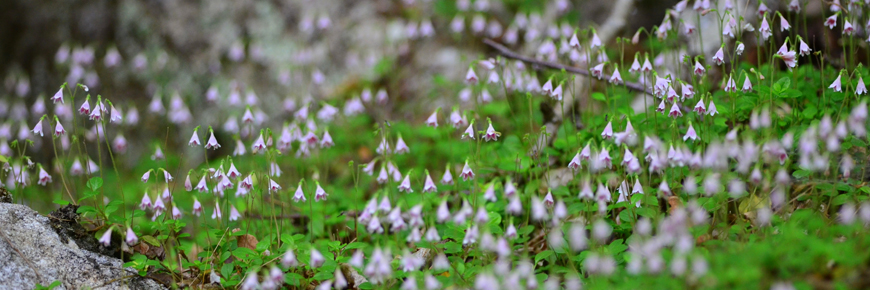
Plants
Cape Breton Highlands National Park
Cape Breton Highlands National Park protects part of the Maritime Acadian Highlands Natural Region, a Parks Canada designation, which is found in the Acadian Forest Region of Canada. This natural region in conjunction with the Great Lakes - St. Lawrence Forest Region is part of a mixed hardwood-softwood forest that stretches from the Great Lakes to New England and Maritime Canada.
What kinds of plants are here?
The climate and landscape of northern Cape Breton have created an unusual mix of southern and northern plant species.
Southern (temperate) plants such as sugar maple, yellow birch and Dutchman's breeches usually occur farther south in New England, but thrive in the rich woodlands of Cape Breton's sheltered valleys. Most plants on the Cape Breton plateau are cold-loving northern (boreal) species such as balsam fir, white birch, black spruce and bunchberry.
Northern Cape Breton has 631 native plant species and 118 introduced, or "exotic", species. These species were generally brought to the area by humans, sometimes on purpose as garden plants, and sometimes accidentally. They include plants like Japanese knotweed, ox-eye daisy, lupine, and black-eyed susan, as well as dandelions and purple loosestrife.
Although part of the Maritime Acadian Highlands Natural Region, the vegetation in northern Cape Breton can actually be divided into three distinct land regions: Acadian, composed of mixed woods; Boreal, or softwood; and Taiga, made up of scrub forest, barrens and bogs.
Related links
- Date modified :